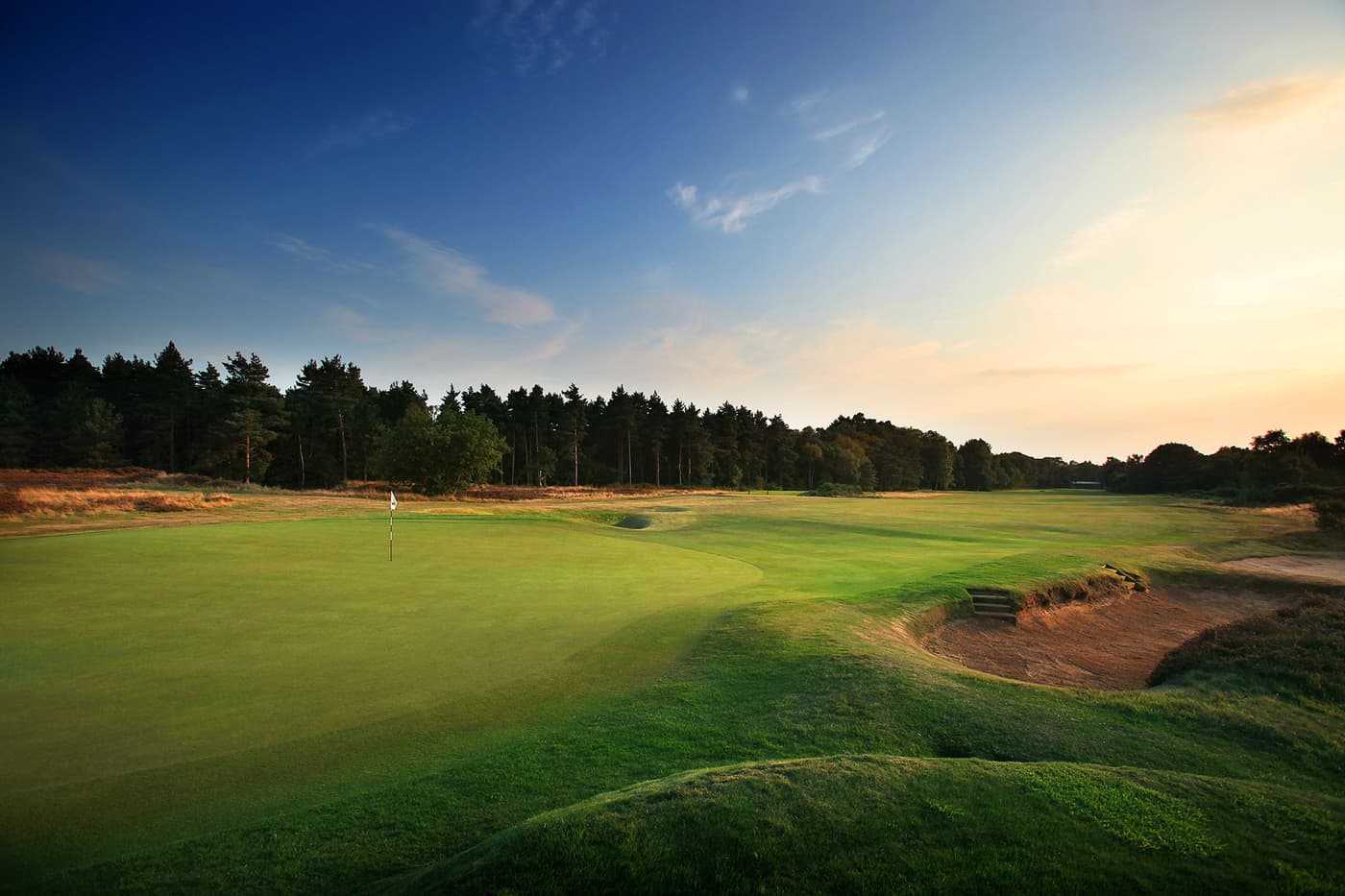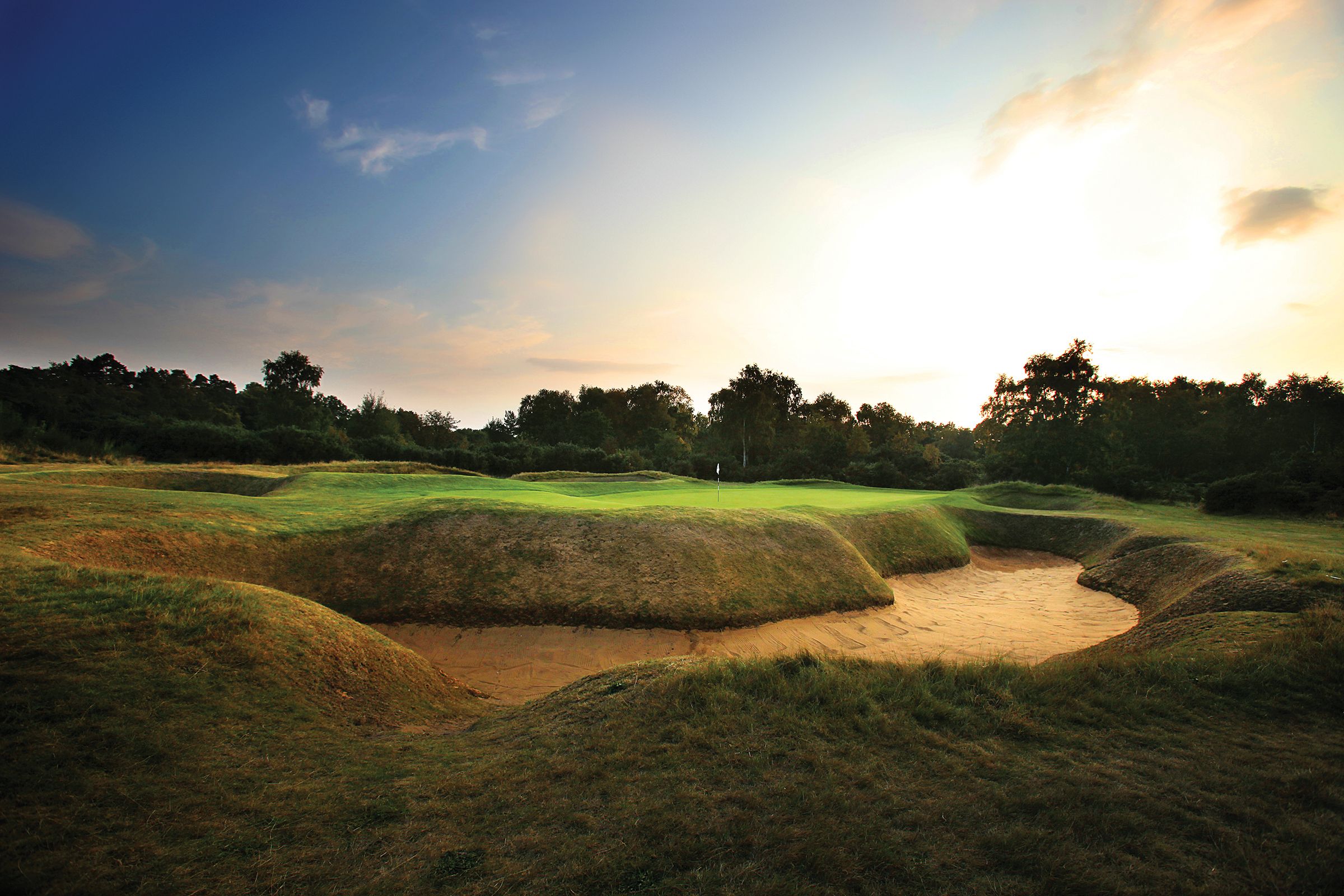
- AddressThe Broadway, Woodhall Spa LN10 6PU, UK
- Championships hosted
The Hotchkin course at Woodhall Spa invariably fights with Loch Lomond and Sunningdale Old for the coveted position of “best inland golf course” in the British Isles. Originally, Harry Vardon laid out the course and it opened for play in 1905. Harry Colt, just before the Great War, made further modifications to the layout. But in the 1920s, the owner, Colonel S.V. Hotchkin, put the course through one last major redesign phase before the Hotchkin finally matured into its present layout. The English Golf Union purchased Woodhall Spa in 1995 for a reputed £8m and turned it into their headquarters.
An oasis in the heart of Lincolnshire. Set amongst glorious pine, birch and broom, this heathland course is an absolute delight to play. The sandy subsoil allows all-year-round golf, the springy turf making walking a real pleasure. Keep your ball in play and do your best to avoid the heather, gorse and bunkers. See if you can copy the feat of J.A. Wilson (8 h/cap) and his opponent L.D. Henshaw (12 h/cap). In 1982, Wilson holed in one at the 12th (a beautiful, long par three) but only managed a half because Henshaw also holed in one. Apparently they were hurrying their shots too because they had just been invited to play through. The four-ball standing behind the green were gobsmacked!
The Hotchkin is bunker heaven (or hell), notorious for its deep, cavernous sand traps. It is also helpful if you can hit the ball long and straight. Otherwise you will be presented with some very tough second shots. Woodhall Spa isn’t a tournament course, but it is supremely challenging and plays host to a number of distinguished national and international amateur competitions.
Many important matches have been decided on its famous 18th hole. This 540-yard par five finishing hole typifies what is so special about Woodhall Spa. If we can strike the ball with solidity off the tee and avoid the hazards, then we give ourselves a chance of scoring well. We can see the flag clearly in the distance but the drive is tight. We must land left of the sentry oak, but not too far left, otherwise we will be bunkered. We must be dead straight in order to find the crisp, sandy fairway and if we achieve all these things, and if we are a stout hitter, we may be tempted to go for the green with our second shot. It is tempting - the route to the green is visible but is protected by bunkers and there's a swale guarding its right flank. What can we say? “Go for it” perhaps?
The future of the Hotchkin was addressed in 2015 as there was serious concern about the poor condition of the bunkers, the encroachment of trees and the general more parkland feel of the layout. Tom Doak and his Renaissance Golf Design team were called in develop a plan that would see the course through the following twenty-five years of operation. In the architect's words: “Generally removing visual clutter so that the unique bunkering can dominate the views.”
Key areas to be tackled included the renovation of all the bunkers, the significant removal of trees and scrub, the restoration of heather and heathland characteristics, and the return of greens to their original dimensions.
The plan was to tackle six holes a year for three years, starting in December 2016. Tom Doak and his team carried out the shaping and the club’s in-house green keeping team finished the re-instatement work that was necessary.
Holes 7 to 11 and 13 were completed in phase 1, holes 5, 6, 12, 14, 16 and 17 in phase 2 and the remaining holes in phase 3. During the project, 43 new bunkers were constructed or re-introduced, three greens were moved and re-shaped, more than 30,000 square metres of turf was hand laid, 90,000 square metres of scrub cleared, and 10,000 trees cleared.
The journey to play this heathland gem is not easy for most visiting golfers, but the green fee is great value, especially if you are a member of an English golf club.
Course Reviews
Leave a Review
This course has not been reviewed.
If you have played this course, consider .
Thanks for the review
Your review has been successfully submitted and will be reviewed for approval.
Course Reviewed
You’ve already submitted a review for this course.
Course Architect
View All
In 1900, Vardon embarked on a year-long tour of the US and Canada to promote AG Spalding's new “Vardon Flyer" golf ball. The Open Champion quickly become golf’s first international celebrity.





